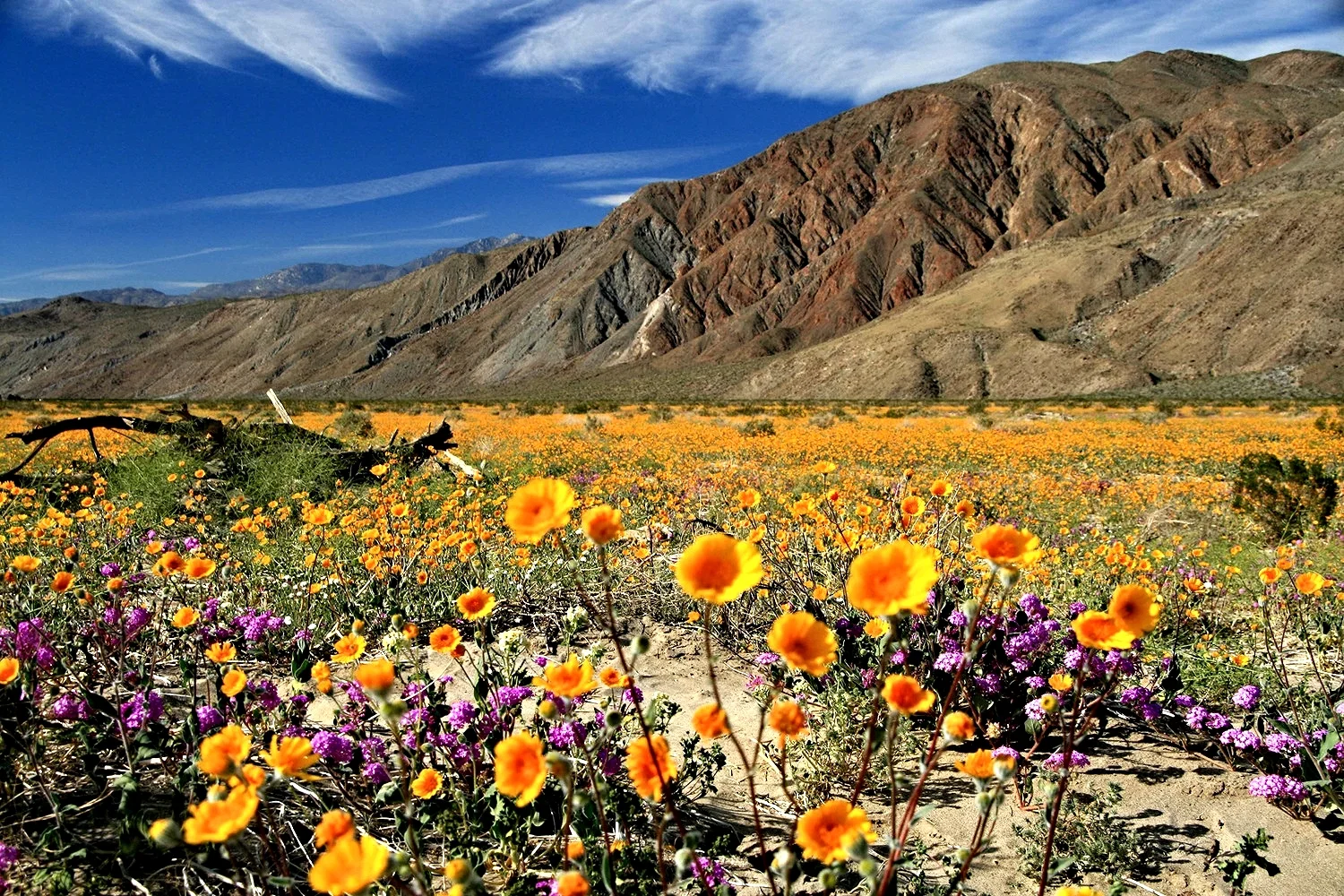The Botany Society Celebrates Tenth Anniversary
/By Joanne Ingwall, Immediate Past President
Last February, we presented the first in a series of essays looking back and celebrating 10 years of history and accomplishments of the ABDSP Botany Society. That article reported on the goals of the Society and the activities put in place in the first year to achieve them. This second retrospective will focus on two parts of our mission: education through field work and building a scientifically useful herbarium.
There is no better way to learn about plants than to see them in their native habitat, watching them germinate, grow, flower and fruit. Throughout our 10-year history, a high priority for new and seasoned Botany Society members is to do just that. San Diego County contains one of the most diverse flora on the continent, and ABDSP encompasses many plant habitats ranging from the desert floor to the montane, offering rich opportunities to learn. Here are a few of the Botany Society’s accomplishments in field work.
In the first year of the Botany Society, volunteers became trained participants of the San Diego Plant Atlas project of the San Diego Natural History Museum (the NAT). The Plant Atlas aims to describe all native and naturalized plants in the County. This information documents our region's unique natural history and biodiversity, and provides valuable scientific data showing how it is evolving. These trained volunteers routinely survey one or more sectors within the Park (3 x 3 mile squares) and collect plants not only for the NAT herbarium but also for our CDD herbarium. The goal is to collect a representative of each plant that exists in that sector. Many hundreds of plant specimens have been collected; one is sent to the NAT for identification and another is entered into the CDD herbarium. Even though the Plant Atlas Project is coming to an end, many Botany Society members still monitor their sectors. Most notable of them is Mary Jo Churchwell, who logs in many hundreds of hours each year monitoring several sectors.
The Botany Certification Course held every year heavily relies on field trips for educating new Botany Society members. Our theme might well be summarized by the questions: What do you see? What else do you see? The field trips led by botanists Kate Harper and Larry Hendrickson are the most popular classes. Not only are they fun, they are scientifically valuable. On one of the very first field trips in the first year of the Society, Diana Lindsey found a species in the Clark Dry Lake Area that was new to the Park: Eriastrum sparsiflorum subspecies Harwoodii (according to Sarah Degroot).
Botany Volunteer Pat Matthews is our weed warrior. For many years now, Pat has led a group of volunteers dedicated to eradicating the two worst invasive plants in the Valley: Sahara Mustard (Brassica tournefortii) and Volutaria. An invasive plant is one which outcompetes native plants, thereby altering the composition of plant communities and, often, leading to the eradication of native plants. The scientific, economic and even cultural benefits of this field work are enormous.
The CDD has an herbarium—the collection of the plants that exist within the CDD parks. Our Herbarium is part of a network of herbaria designed to share information about the flora of the region. Botany Society members have contributed to the Herbarium in many ways.
First, they collect (using proper protocols) representative plants in the field.
Second, they process the plants for preservation: drying, debugging (put in a freezer – really!) and then mounting (gluing) them onto sheets. The sheets show whole plants (if possible), their parts, their provenance, their identification and when and who found it. Over the past 10 years, thousands of hours have been spent by Botany.
Society volunteers mounting specimens in the Botany Lab: Kathy Bussey, Laura Webb, Ruth Ehly, Ruth Otis, Heidi Addison, Sonja MacGrath, Martha Ellul, Mary Jo Churchwell and Claire Burwell are among those on the “mounting” team. Volunteers even built the workbenches!
Third, volunteers enter the scientific data (what it is and where it was found) into the CDD data bank so that it can be used by scientists. A major accomplishment of Botany Society volunteer Birgit Knorr, aided by data base expert Linda Gilbert on loan from the Paleo Society, has been to create a useful database and to enter and update the records describing the flora of our Park....more than 5500 different plants. This has been an enormous undertaking!
To say that field work is the foundation of the work of the Botany Society (indeed, of all our Societies) may be an understatement. To be effective in the field, Botany Society volunteers must learn plant morphology, plant ecology and the characteristics of the plant families comprising the diverse plant communities that exist in our Park … that will be the topic of the next installment describing our first 10 years.
